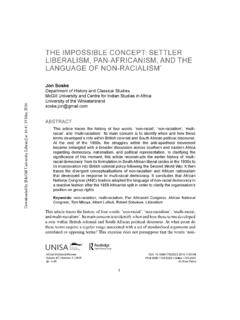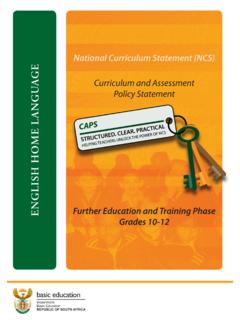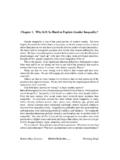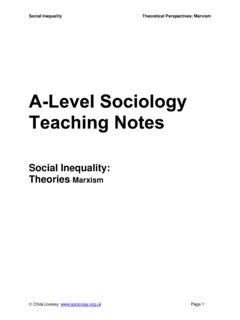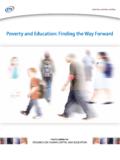Transcription of Class, Race, and Inequality in South Africa
1 class , Race, and Inequality in South AfricaClass, Race, and Inequalityin South AfricaYale University PressNew Haven and LondonJeremy Seekings and Nicoli NattrassPublished with assistance from the Louis Stern Memorial Fund and the John K. Castle Publications Fund of Yale University s Program in Ethics, Politics, and by Yale rights book may not be reproduced, in whole or in part, including illustrations,in any form (beyond that copying permitted by Sections and of Copyright Law and except by reviewers for the public press), withoutwritten permission from the in Adobe Garamond and Stone Sans types by The Composing Room ofMichigan, in the United States of of Congress Cataloging-in-Publication DataSeekings, , race, and Inequality in South Africa / Jeremy Seekings and Nicoli bibliographical references and - - - (hard cover : alk.)
2 Paper) . Income distribution South Africa .. Apartheid Economic aspects South Africa .. Social classes South Africa .. Labor market South Africa .. Education and state South Nattrass, .Z I . dc A catalogue record for this book is available from the British paper in this book meets the guidelines for permanence and durabilityof the Committee on Production Guidelines for Book Longevity of theCouncil on Library Resources. ContentsAcknowledgments, viiAuthors Note, ix1 Introduction: States, Markets, and Inequality , 2 South African Society on the Eve of Apartheid, 3 Social Change and Income Inequality Under Apartheid, 4 Apartheid as a Distributional Regime, 5 The Rise of Unemployment Under Apartheid, 6 Income Inequality at Apartheid s End, 7 Social Stratification and Income Inequality at theEnd of Apartheid, 8 Did the Unemployed Constitute an Underclass?
3 , 9 Income Inequality After Apartheid, 10 The Post-Apartheid Distributional Regime, 11 Transforming the Distributional Regime, Notes, References, Index, ContentsviAcknowledgmentsviiThis volume was conceived in , when Nicoli Nattrass servedon South Africa s Presidential Commission to Investigate LabourMarket Policy and Jeremy Seekings taught a course on South Africansociety at the University of Cape Town. How, we debated, shouldlabour market and welfare policies be reformed (or transformed) toaddress the challenges of poverty and Inequality ?
4 It probably goeswithout saying that the final volume looks nothing like the volumeimagined at the outset and, indeed, contains curiously little of thework we collaborated on initially in the late s. The ensuing yearssaw an explosion in qualitative and quantitative research on many as-pects of our topic. And new data became available about the continu-ities and changes that followed the end of apartheid. The book reflectsnew research by other scholars and ourselves. Previous versions ofsome of our arguments did find their way into print, in a series of jour-nals, edited collections, and working final version has benefited from comments made at many con-ferences and seminars, by students subjected to successive drafts, andby friends and colleagues.
5 Research was facilitated with financial sup-port from the University of Cape Town s University Research Committee andthe Ernest Oppenheimer Memorial Trust (which financed a short stay in Ox-ford). From onward we benefited from the generous support for UCT sCentre for Social Science Research from the Andrew Mellon Foundation. Ourstays in Oxford and (twice) at Yale University provided valuable opportunitiesto write and rewrite. Ian Shapiro facilitated publication by Yale UniversityPress. We are grateful also for the detailed comments made by the press s tworeferees, Alan Jeeves and Gavin Williams, as well as by David also to Allison Stevens for her help with proofreading and like to think that we have presented some original work herein, but ourwork has been based on the wealth of valuable analysis conducted by many oth-ers before us.
6 As we hope is evident, we build on earlier work by radical and liberal scholars, as well as more contemporary work by economists and othersocial scientists who are now hard to label. Any attempt at naming them (you)all would risk inadvertent omission, but we hope that our debts to the work ofother scholars (including present colleagues) is readily apparent in the pagesthat NoteRacial terminology in South Africa is a complicated matter. In thisbook we use the terms most widely used in South Africa in the recentpast. African refers to people classified by the apartheid state as na-tive, Bantu, or black.
7 White refers to people classified as Euro-pean and later as white by the apartheid state. Indian refers to peo-ple who were brought to or came to South Africa from the Indiansubcontinent and were sometimes classified as Asiatic by the apart-heid state. Coloured, referring mainly to people in the WesternCape, designates those who did not fit the other categories: some weredescendants of the indigenous Khoi and San who inhabited the West-ern Cape before the arrival of either white or African people; othersare the descendents of Malay slaves, brought from Indonesia andelsewhere by Dutch colonists; others are descendents of relationshipsbetween white and African people.
8 We use black to refer to African,coloured, and Indian people the reader s convenience, we offer the following comparison ofSouth African currencies to the in was worth R , or about US$ , in pricesR in was worth R , or about US$ , in pricesR in was worth R , or about US$ , in pricesR in was worth R , or about US$ , in pricesR in was worth R , or about US$ , in pricesR in was worth R , or about US$ . , in pricesR in (the time of the PSLSD survey) was worth R , or about US$ . , in pricesR in was worth R . or, about US$.
9 , in pricesA wage of R per month in , for example, would be worth about R , ,or slightly less than US$ , per year, in . An annual salary of in would be worth R , , or a little more than US$ , , in . An income of R , per year in would be worth about R , orUS$ , , in . South Africa used pounds until the s; the rand was introduced at the ex-change rate of two rand for one pound, so that in was worth R , orabout US$ , in prices; in was worth R , or about US$ , in prices; and in was worth R , or about US$ in , South Africa has changed its nomenclature for school grades severaltimes.
10 The current system of grades supersedes standards, which supersededforms. gradesstandardsformsgrade sub-Agrade sub-Bgrade standard grade standard grade standard grade standard grade standard grade standard form grade standard form grade standard form grade standard form grade standard form Authors NotexClass, Race, and Inequality in South AfricaChapter 1 Introduction: States,Markets, and Inequality1 The relation between public policy and economic Inequality has beenthe focus of considerable research in recent years.



